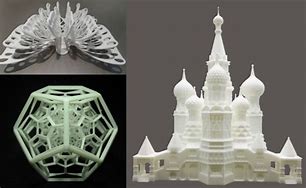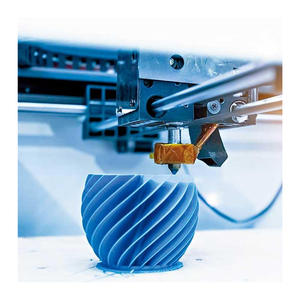**From Plastic to Chocolate: The Wild World of 3D Printing Materials**
(What Materials Can You 3d Print With)
3D printing feels like magic. You press a button, and layer by layer, objects appear. But the real magic isn’t just in the machines. It’s in the materials. What can you actually print with? The answer might surprise you. Let’s dive into the weird, wonderful, and sometimes edible stuff that brings 3D creations to life.
Start with the basics. Plastics rule the 3D printing world. PLA is the friendly starter material. Made from cornstarch or sugarcane, it’s biodegradable and smells faintly sweet when melted. Printers love it for toys, phone cases, or simple prototypes. Then there’s ABS. Tougher than PLA, it’s the stuff of LEGO bricks. It handles heat better but needs good ventilation—those fumes aren’t exactly perfume. For something flexible, TPU bends without breaking. Think phone grips, shoe soles, or squishy robot parts.
But plastics are just the tip of the iceberg. Metals like stainless steel, titanium, and aluminum get serious. Industrial printers use lasers or electron beams to fuse metal powders. The results? Aerospace parts, medical implants, or custom bike frames. Metal printing isn’t for hobbyists—yet. The machines cost more than a house.
Ceramics are another twist. Printers squirt clay-like paste, then fire the finished piece in a kiln. The result? Delicate vases, heat-resistant engine parts, or artistic sculptures. Ceramic printing merges ancient craft with futuristic tech.
Now for the fun stuff. Ever printed a snack? Food-grade 3D printers use chocolate, sugar paste, or even mashed potatoes. Chefs create intricate desserts, wedding cake toppers, or personalized candies. It’s not just gimmicky. Hospitals use pureed food printed into appealing shapes for patients with swallowing issues.
Wood? Yes, sort of. Filaments mix recycled wood dust with PLA. The finished product looks and smells like wood. Sand it, stain it, and you’ve got rustic picture frames or decorative bowls. Carbon fiber blends are stiffer than regular plastics. They’re perfect for drone parts or car accessories needing extra strength.
Biodegradable options are rising. Algae-based filaments break down in compost bins. Mushroom leather grows into printable, eco-friendly textures. These materials aren’t mainstream yet, but they hint at a greener future.
Let’s get weird. Some labs experiment with living cells. “Bioprinting” layers human or animal cells to create tissue. Scientists hope to one day print organs for transplants. Other researchers print with glass, turning molten silica into delicate art. There’s even conductive ink for printing circuits straight into gadgets.
The limits keep stretching. Astronauts on the ISS print tools with plastic. Artists print dresses that light up. Dentists print crowns in an hour. What’s next? Maybe printable homes using concrete mixes. Or smart materials that change shape with temperature.
(What Materials Can You 3d Print With)
Your material choice depends on what you’re making. Need something cheap and cheerful? Grab PLA. Dreaming of a titanium bracelet? Find a professional service. Craving a chocolate statue? Yes, that’s a thing. 3D printing materials are as endless as imagination. Just don’t eat the plastic.
Inquiry us
if you want to want to know more, please feel free to contact us. (nanotrun@yahoo.com)

